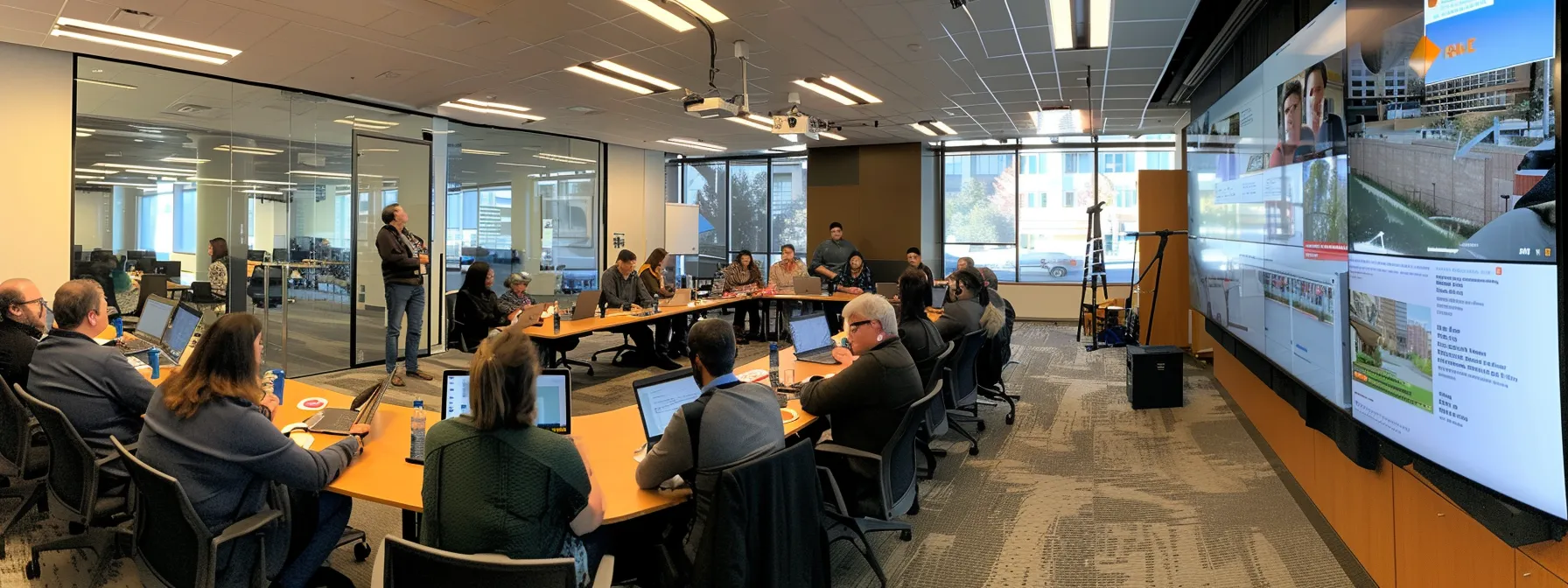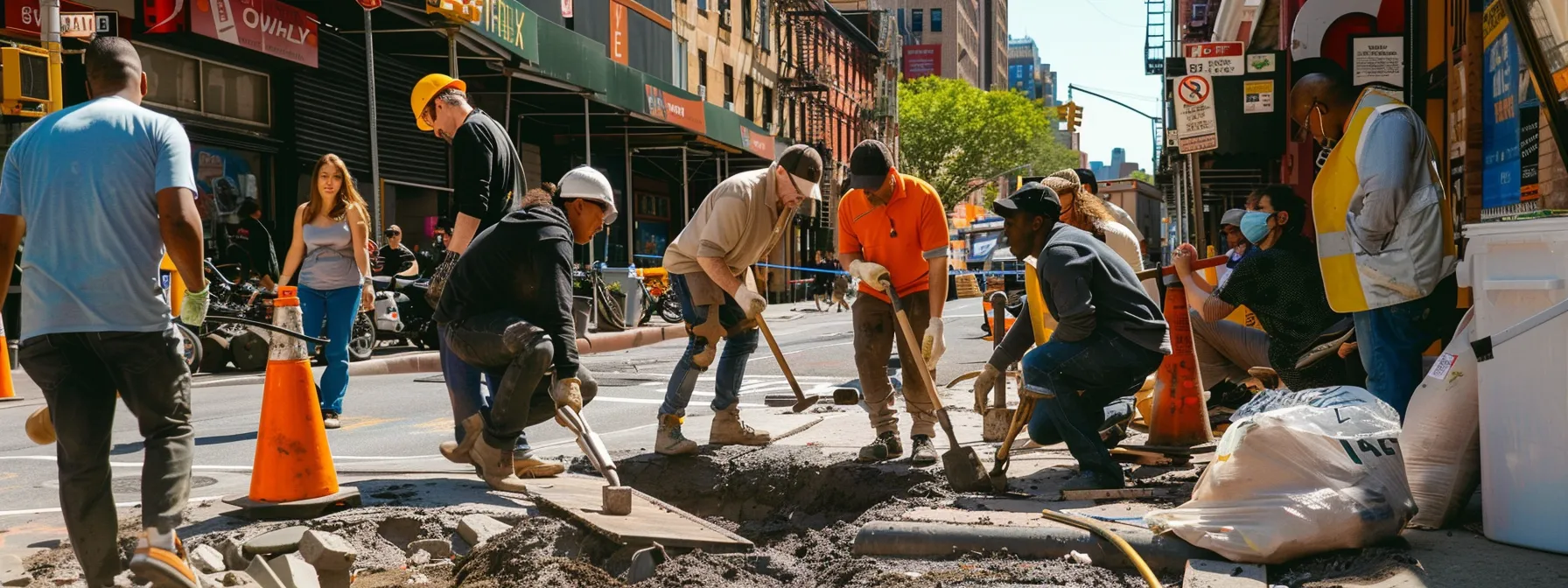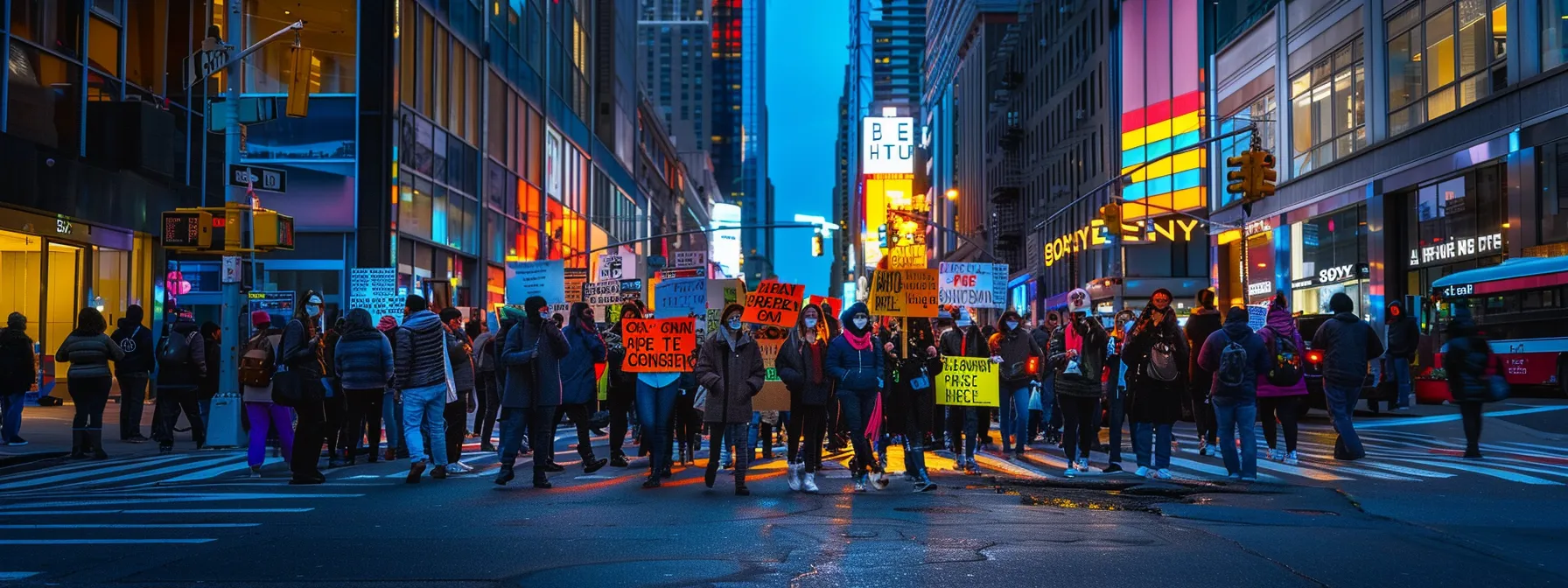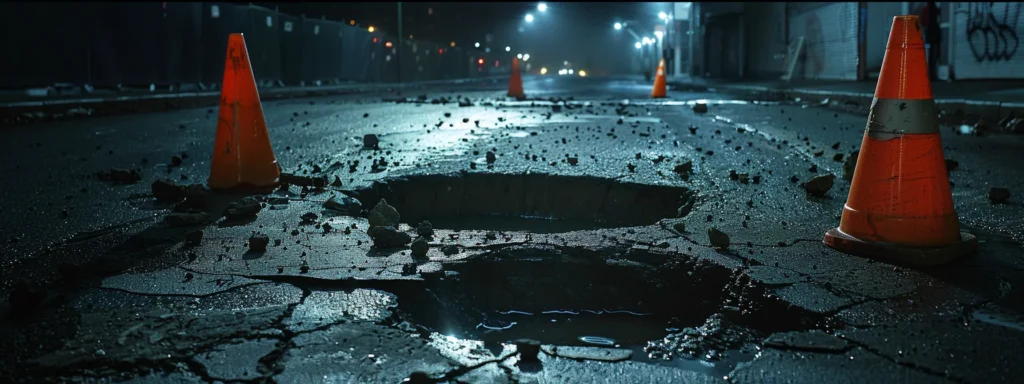Rudraksha Therapy
Protect Yourself From a Deep Hole in the Sidewalk
Table Of Contents:
- Community Actions for a Deep Hole in the Sidewalk Hazard
- Identify Community Concerns Regarding Sidewalk Hazards
- Organize Local Actions to Address the Sidewalk Issue
- Collaborate With Local Authorities for Repair Initiatives
- Raise Awareness Through Educational Campaigns
- Advocate for Policy Changes to Improve Sidewalk Safety
- Monitor and Maintain Long-Term Sidewalk Safety
Community Actions for a Deep Hole in the Sidewalk Hazard
Have you noticed a dangerous hole in your neighborhood sidewalk? This article will guide you through effective community actions to address this hazard. You’ll learn how to organize local efforts, work with authorities, and raise awareness about sidewalk safety. By following these steps, you can help create a safer environment for everyone in your community and prevent potential accidents.
Identify Community Concerns Regarding Sidewalk Hazards

As you address the deep hole in the sidewalk hazard, gathering community input is crucial. You’ll learn to collect resident feedback, hold safety meetings, share reports, document incidents, and use social media for broader engagement. This process, like composing a stress-relieving song, requires careful steps and collaboration, reminiscent of Miles Davis‘s “Seven Steps to Heaven.” Your community’s collective voice will guide effective solutions.
Gather Feedback From Residents to Assess the Situation
You can gather feedback from residents to assess the situation by conducting surveys, holding community meetings, or setting up a dedicated phone line or email address. This approach allows you to understand the community’s feelings about the sidewalk hazard and its impact on their health and safety. By actively listening to residents’ concerns, you’ll gain valuable insights into their experiences, potentially uncovering anger or frustration related to the issue. Remember that effective communication and showing genuine concern for the community’s well-being can foster a sense of unity and love among residents, creating a stronger foundation for addressing the problem.
Conduct Community Meetings to Discuss Sidewalk Safety
Organize community meetings to discuss sidewalk safety concerns, focusing on the deep hole hazard. These gatherings provide a platform for residents to express their emotions and motivations regarding the issue. Encourage open dialogue about how the hazard affects their daily behavior and overall happiness. By addressing these concerns collectively, you can foster a sense of community and help residents feel heard, potentially easing the “I fall in love too easily” sentiment some may have towards quick fixes.
Share Safety Reports to Raise Awareness on Hazards
You can share safety reports to raise awareness about the deep hole hazard in your community. Compile data on incidents, potential risks, and expert assessments, presenting them in clear, accessible formats. This approach, reminiscent of how Jule Styne and Sammy Cahn collaborated on impactful songs, combines factual information with community engagement. Consider incorporating mindfulness techniques, such as those used by Jason Lytle in his music, to help residents process the information calmly. Regular safety report updates can serve as a form of community meditation, fostering awareness and encouraging collective action to address the sidewalk hazard.
Document Incidents Related to the Deep Hole on Sidewalk
You should establish a systematic process to document incidents related to the deep hole in the sidewalk. Create a detailed record, including date, time, and nature of each incident, to build a comprehensive dictionary of events. This documentation will help identify patterns and pressure points, allowing you to address the issue effectively. As you collect this information, keep in mind how it impacts the community’s identity and sense of safety. By maintaining accurate records, you’ll fall into a rhythm of proactive problem-solving, enhancing your ability to protect residents and improve neighborhood conditions.
Utilize Social Media for Wider Community Input
Utilize social media platforms to gather wider community input on the deep hole sidewalk hazard. Create dedicated hashtags and encourage residents to share their experiences, concerns, and suggestions online. This approach allows you to reach a broader audience, including those who may not attend in-person meetings. Monitor these platforms regularly, treating the engagement as a form of community prayer and exercise in collective problem-solving. Respond promptly to comments and questions, demonstrating your commitment to addressing the issue and fostering a sense of unity among residents.
The neighbors gathered, their voices rising with concern. It was time to turn words into action and fix the broken sidewalks.
Organize Local Actions to Address the Sidewalk Issue

Organize local actions to address the deep hole in the sidewalk by forming a community group focused on maintenance. Plan neighborhood clean-up campaigns and create a volunteer task force for immediate repairs. Coordinate with local businesses for support and engage schools in sidewalk awareness initiatives. These steps will help you effectively tackle the hazard and improve community safety.
Form a Community Group Focused on Sidewalk Maintenance
To address the deep hole in the sidewalk, form a community group dedicated to sidewalk maintenance. Recruit local residents with relevant skills or interests in urban planning, construction, or community safety. Establish regular meetings to discuss ongoing issues, plan maintenance activities, and coordinate with local authorities. This group will serve as the central hub for organizing efforts to improve sidewalk conditions and ensure pedestrian safety in your neighborhood.
Plan Neighborhood Clean-Up Campaigns for Sidewalk Areas
You can organize neighborhood clean-up campaigns to address the sidewalk hazard and improve overall safety. Schedule regular events where community members gather to clear debris, identify potential hazards, and report issues to local authorities. These campaigns not only help maintain sidewalks but also foster a sense of community ownership and responsibility for public spaces.
Create a Volunteer Task Force for Immediate Repairs
You can create a volunteer task force for immediate repairs to address the deep hole in the sidewalk. Recruit skilled community members and coordinate with local authorities to ensure proper permissions and safety protocols. This team can quickly respond to urgent sidewalk issues, providing temporary fixes while long-term solutions are developed.
Coordinate With Local Businesses to Seek Support
You can coordinate with local businesses to seek support for addressing the deep hole in the sidewalk. Approach nearby shops, offices, and restaurants to discuss how the hazard affects their customers and employees. Request financial contributions, materials, or volunteer hours to assist in repair efforts. This collaboration can lead to a swift resolution of the sidewalk issue while strengthening community ties.
Engage Schools in Sidewalk Awareness Initiatives
You can engage schools in sidewalk awareness initiatives to address the deep hole hazard. Collaborate with local educators to develop age-appropriate lessons on pedestrian safety and community responsibility. Organize school-wide campaigns where students can participate in identifying and reporting sidewalk issues, fostering a sense of civic engagement from a young age. This approach not only helps address the immediate problem but also cultivates long-term community awareness and involvement in maintaining safe public spaces.
The community banded together, determined to fix their broken sidewalks. Now they faced their biggest challenge: working with city officials to make it happen.
Collaborate With Local Authorities for Repair Initiatives

Collaborate with local authorities to address the deep hole in the sidewalk. Set meetings with city officials, draft petitions, request urgent assessments, and suggest regular maintenance schedules. Follow up on progress to ensure accountability. These steps will help you work effectively with local government to resolve the hazard and improve community safety.
Set Meetings With City Officials to Discuss Repairs
Schedule meetings with city officials to discuss the deep hole in the sidewalk. Present your community’s concerns, backed by documented incidents and safety reports. Request a timeline for repairs and explore potential funding options. Your proactive approach will demonstrate the urgency of the issue and help prioritize the necessary repairs.
Draft Petitions for Timely Repairs on Sidewalk Hazards
You can draft petitions for timely repairs on sidewalk hazards to demonstrate community support for addressing the deep hole issue. Clearly outline the problem, its location, and the potential risks it poses to pedestrians. Gather signatures from residents, local businesses, and community organizations to show widespread concern. Submit the petition to relevant city departments and council members, requesting prompt action and a specific timeline for repairs.
Request for Urgent Assessments by Local Services
You should request urgent assessments by local services to address the deep hole in the sidewalk. Contact your city’s public works department or transportation division to schedule an immediate inspection of the hazard. Provide them with specific details about the location and severity of the issue, emphasizing the potential safety risks to pedestrians. By initiating this prompt evaluation, you’ll expedite the repair process and demonstrate your community’s commitment to resolving the sidewalk hazard efficiently.
Suggest Regular Maintenance Schedules With Authorities
You should propose regular maintenance schedules to local authorities to prevent future sidewalk hazards. Present a detailed plan outlining recommended inspection intervals, maintenance procedures, and budget estimates. Emphasize how proactive maintenance can save costs long-term and enhance community safety. Offer to collaborate with the authorities in implementing and monitoring the maintenance schedule, demonstrating your commitment to ongoing sidewalk care.
Follow Up on Progress to Ensure Accountability
You should maintain regular contact with local authorities to track progress on the sidewalk repair. Schedule follow-up meetings, request written updates, and visit the site periodically to verify improvements. If delays occur, escalate the issue to higher officials or consider involving local media to ensure accountability. Your persistent follow-up demonstrates the community’s commitment to resolving the hazard and encourages timely action from authorities.
Neighbors united, hammers in hand. Their passion for change now turned to educating others.
Raise Awareness Through Educational Campaigns

You can effectively raise awareness about the deep hole sidewalk hazard through educational campaigns. Develop informational flyers, host workshops on reporting hazards, utilize local media, create social media campaigns, and encourage art students to create awareness murals. These strategies will help engage residents, promote community safety, and drive action to address the sidewalk issue.
Develop Informational Flyers on Sidewalk Safety
Create informative flyers to educate your community about sidewalk safety and the deep hole hazard. Include clear descriptions of the issue, its location, and potential risks to pedestrians. Provide guidance on how to report sidewalk hazards and contact information for local authorities. Distribute these flyers in high-traffic areas, community centers, and local businesses to maximize awareness and encourage action.
Host Workshops on Reporting Sidewalk Hazards
You can organize workshops to educate residents on effectively reporting sidewalk hazards like the deep hole. Teach participants how to document issues, use official reporting channels, and follow up on their reports. Include hands-on exercises where attendees practice filling out report forms and using online reporting tools. These workshops will empower your community to actively contribute to sidewalk safety and maintenance efforts.
Utilize Local Media to Highlight Community Safety Issues
You can leverage local media outlets to spotlight the deep hole sidewalk hazard and broader community safety issues. Reach out to local newspapers, radio stations, and TV channels to share your story, emphasizing the potential risks to pedestrians. Provide them with documented incidents, photos of the hazard, and interviews with affected residents to create compelling news pieces that raise public awareness and pressure authorities to take action.
Create Social Media Campaigns to Engage Residents
You can create engaging social media campaigns to increase awareness about the deep hole sidewalk hazard. Use platforms like Facebook, Twitter, and Instagram to share regular updates, photos, and videos highlighting the issue. Encourage residents to use specific hashtags when reporting hazards or sharing their experiences. This approach will help you reach a wider audience and create a sense of community involvement in addressing the sidewalk safety problem.
Encourage Local Art Students to Create Awareness Murals
You can partner with local art students to create awareness murals about the sidewalk hazard. Collaborate with art teachers to incorporate the project into their curriculum, encouraging students to design visually striking murals that highlight the dangers of the deep hole. Display these artworks in high-traffic areas near the hazard site to catch pedestrians’ attention and reinforce the importance of sidewalk safety.
Action spoke louder than words. Now it was time to change the rules of the game.
Advocate for Policy Changes to Improve Sidewalk Safety

To address the deep hole in the sidewalk hazard, advocate for policy changes that improve sidewalk safety. Research existing regulations, propose new policies, and collaborate with advocacy groups. Organize public demonstrations to gather support and create a resource kit for community advocacy. These steps will help you push for stronger regulations and safer sidewalks in your area.
Research Existing Sidewalk Safety Regulations
You should thoroughly research existing sidewalk safety regulations in your area to understand the current legal framework. Review local municipal codes, state laws, and federal guidelines related to sidewalk maintenance and pedestrian safety. This research will help you identify gaps in current policies and provide a foundation for proposing effective changes to address the deep hole hazard.
Propose New Policies for Public Safety Improvements
You can propose new policies to improve public safety and address the deep hole sidewalk hazard. Draft a comprehensive policy document outlining stricter maintenance standards, regular inspection schedules, and clear accountability measures for local authorities. Include provisions for swift repair timelines, increased funding for sidewalk infrastructure, and enhanced reporting mechanisms for residents. Present your proposal to city council members, emphasizing how these policy changes will protect pedestrians and reduce liability risks for the city.
Collaborate With Advocacy Groups for Stronger Regulations
You can collaborate with local advocacy groups to push for stronger regulations addressing sidewalk hazards. Reach out to organizations focused on pedestrian safety, accessibility, or urban planning to join forces in advocating for policy changes. Together, you can develop a comprehensive strategy to lobby city officials, present data-driven arguments, and mobilize community support for improved sidewalk maintenance standards.
Organize Public Demonstrations to Gather Support
You can organize public demonstrations to gather support for addressing the deep hole sidewalk hazard. Plan a peaceful march or rally near the affected area, inviting residents, local officials, and media to participate. Use this event to showcase the community’s united stance on improving sidewalk safety and to present your policy change proposals to a wider audience. Ensure you obtain necessary permits and follow local regulations for public gatherings to maximize the impact of your demonstration.
Create a Resource Kit for Community Advocacy
You can create a comprehensive resource kit to empower community members in advocating for sidewalk safety improvements. Include templates for letters to officials, guides on attending city council meetings, and fact sheets about the deep hole hazard. Provide contact information for relevant authorities and instructions on how to document and report sidewalk issues effectively. This kit will equip residents with the tools they need to engage in meaningful advocacy and support policy changes.
Time passed. The community’s efforts bore fruit as policies changed, but their work was far from over.
Monitor and Maintain Long-Term Sidewalk Safety
To ensure long-term sidewalk safety after addressing the deep hole hazard, implement ongoing monitoring strategies. Establish a watch program, set up regular community check-ins, and develop a reporting system for new issues. Host annual meetings to review safety plans and promote continuous education on sidewalk safety practices. These measures will help maintain safe pedestrian areas in your community.
Establish a Watch Program for Ongoing Sidewalk Assessments
You can establish a sidewalk watch program to ensure ongoing assessments of potential hazards. Recruit volunteers from your community to regularly patrol designated areas, looking for issues like cracks, uneven surfaces, or new holes. Train these volunteers on what to look for and how to report problems effectively. This proactive approach helps identify and address sidewalk issues before they become serious hazards, maintaining pedestrian safety in your neighborhood.
Set Up Regular Check-Ins With Community Members
You should schedule regular check-ins with community members to maintain long-term sidewalk safety. Set up monthly or quarterly meetings where residents can discuss any new concerns or observations about sidewalk conditions. Use these sessions to review the effectiveness of current safety measures and gather feedback on potential improvements. By keeping an open line of communication, you’ll foster a sense of shared responsibility for sidewalk maintenance and ensure that potential hazards are identified and addressed promptly.
Develop a Reporting System for New Sidewalk Issues
You can develop an efficient reporting system for new sidewalk issues to maintain long-term safety. Create a user-friendly online platform or mobile app where residents can easily submit reports, including location details and photos of potential hazards. Implement a ticketing system to track the progress of each report, from submission to resolution. Ensure that the system automatically notifies relevant authorities and provides timely updates to reporters, fostering transparency and accountability in addressing sidewalk issues.
Host Annual Community Meetings to Review Safety Plans
You should organize annual community meetings to review and update your sidewalk safety plans. Gather residents, local officials, and safety experts to assess the effectiveness of current measures and discuss any new concerns. Use these meetings to present data on reported issues, resolved hazards, and ongoing maintenance efforts, allowing for transparent evaluation of your community’s progress in maintaining safe sidewalks.
Promote Continuous Education on Sidewalk Safety Practices
You can promote continuous education on sidewalk safety practices to maintain long-term community awareness. Organize regular workshops and webinars that cover topics such as identifying potential hazards, proper reporting procedures, and the importance of community involvement in sidewalk maintenance. Develop and distribute educational materials, including brochures and online resources, that provide up-to-date information on sidewalk safety standards and best practices for pedestrian safety.



